The colours of Tismana
Tismana is a special place, whose main attraction point is 14th century Tismana Monastery, one of the oldest and most beautiful monasteries in Romania, built in the middle of nature

Daniel Onea, 31.08.2017, 14:22
Tourists to the area can enjoy some delicious meals here. The dishes based on mountain trout are something that every guesthouse has on offer. Located in a beautiful mountainous region, Tismana monastery was built in only one year and took its name from the ”tisa” (yew) tree that once covered the entire area. It was founded by Nicodim the Pious who also built other places of worship in the area and who was later declared a saint. Special construction methods were used to build this monastery.
Moreover, the monastery, whose dominant colour is red, which in time became known as ”Tismana red” continues to keep secret how its colour was obtained. Tismana monastery is protected by high walls, within which monastic cells and a small museum are found.
Although the monastery is the main attraction of the area, Tismana is also worth visiting for its traditions, history and folklore, says Ovidiu Popescu, secretary general of the Association for Tourism Promotion and Development, in Targu Jiu: “We talk about a locality that received the Eden award in the tourism and gastronomy category in 2016. We talk about the world of traditional carpets and about other symbols of the traditional handicraft art. There is a lot of game in this area, as it includes a part of the Domogled Valea Cernei National Park and is also close to the Retezat National Park. Also, there are national festivals here. The Festival of the Gorj folk song, dance and costume is already a tradition in the area. Its first edition was held in 1966 and it has continued up to present. On March 25, Tismana hosted another important festival — the trout festival. The area is rich in fish farms. We want to invite tourists to join us to another beautiful festival this autumn, the Chestnut festival. Efforts have been made in the past few years to protect the chestnut trees here. The pork aspic festival is also a tradition in Tismana and is also held during fall. It is hosted by a villa where Romanian writer and poet George Cosbuc translated Dante’s Divine comedy. This is a place loaded with history as many Romanian cultural personalities were very fond of Tismana.”
Tismana is home to a museum unique in Europe: the Treasure Museum. It is a special museum built in a cave near the monastery that once housed almost two hundred tons of gold from Romania’s treasure, for fear that it might be seized by the Soviets. A part of Poland’s treasure was also kept there temporarily, while being transported across Romania. The most relevant moment of the 1944-1947 period, as shown by the documents kept in the Archives of the National Bank of Romania are presented to the public. This way, visitors have the opportunity to find crucial information on the role of money and of the central bank, also by means of symposia, seminars and colloquia to be later organised in this exhibition area.
Ioan Lesenciuc, an employee of the National Bank of Romania, is the guide to the museum two or three days per month: “Representatives of the National Bank of Romania, Finance Ministry and of the Government paid special heed to the transport, management and protection of the treasure, when it was hidden in a grotto. It was isolated and 100 cubic meters of concrete were used to seal the grotto. The treasure is restored, in images and documents belonging to the National Bank. It is not complete. Some chests are missing, but the most important part of the treasure is visible.”
The Treasure Museum in Tismana is a unique investment in Europe. The works started in 2013. Visitors will also find information on the role of money and of the central bank, by attending symposia organised here.
Ioan Lesenciuc has further details on Romania’s treasure: “It included two types of gold bars: international gold ingots weighing 12 grams each, and national bars weighing 6.5 kilos each. In the 1944-1947 period, some 191 tons of pure gold were hidden here. Apart from this amount, Romania also held some 40.7 tons of gold, which have been sent for safekeeping in the banks of the United Kingdom. Apart from Romanian gold, Romania also had some 2.7 tons of Polish gold, en route to Greece, which were sent to the Romanian Government in 1939, for safe keeping. The National Bank accepted that a small part of the Polish treasure be kept in Tismana.”
Ovidiu Popescu, secretary general of the Association for Tourism Promotion and Development says that many tourists have put Tismana on a longer tourist route: “There is a whole history there, in a cave, near Tismana monastery. The area is an attraction point for tourists, as a continuation of their trips to Pestisani and Hobita, the birthplace of sculptor Constantin Brancusi. This is the classical tourist route: Targu Jiu, Hobita — the Brancusi memorial house, Tismana. The circuit continues with Baia de Arama and goes further away to Herculane, on the other side of the mountains. The landscape is breathtakingly beautiful.”
So, here is a place where tourists can relax, attend various events around the year, which offers everyone the opportunity to make an incursion into the arts world, be it traditional or modern.






























